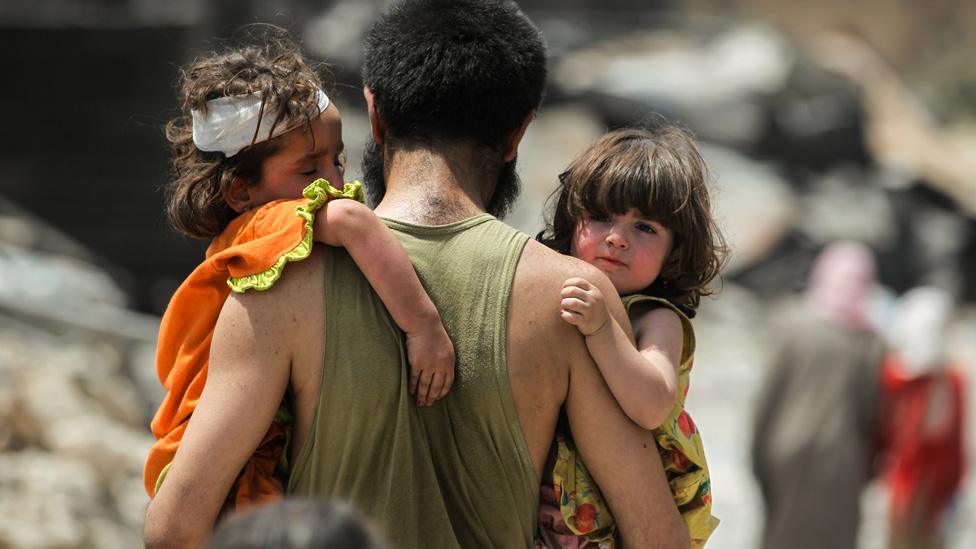Mosul: Satellite images reveal city damage
- Published
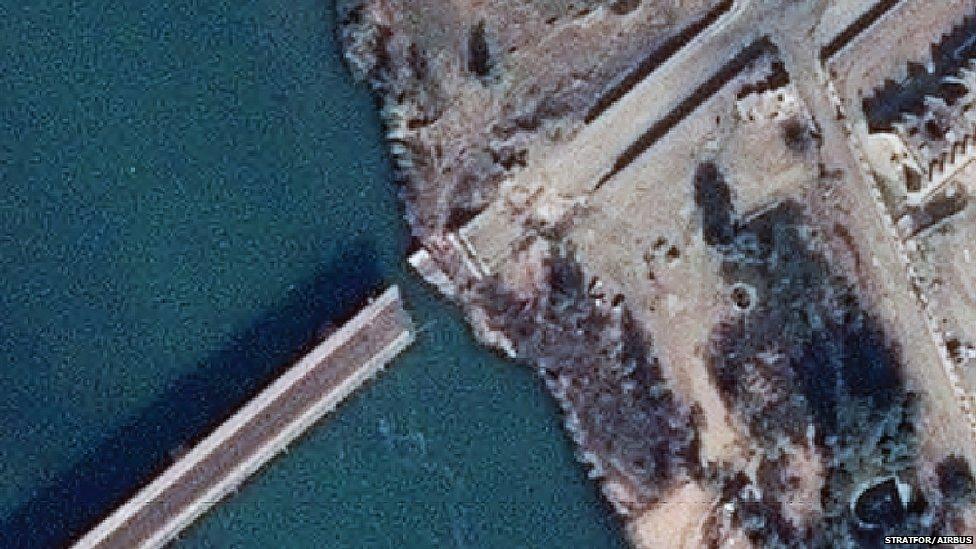
Satellite images of Mosul have revealed extensive damage to the city's buildings, infrastructure and archaeological sites following more than two years of occupation by so-called Islamic State (IS).
The imagery, released by US geopolitical intelligence company Stratfor, external, shows how the jihadists have destroyed mosques, government buildings and historical areas. It also reveals damage caused by coalition airstrikes.
Militants have bulldozed the gates and other parts of the ancient Assyrian site of Nineveh, destroyed the minaret of the Mosque of Prophet Yunus (biblical figure Jonah), one of the city's most prominent places of worship, and flattened the province's administrative building, Stratfor says.
Coalition airstrikes have also knocked out a key bridge over the Tigris River.
About 50,000 Iraqi security forces, Kurdish Peshmerga fighters, Sunni Arab tribesmen and Shia militiamen, assisted by US-led coalition airstrikes, are currently involved in a military offensive to reclaim Mosul from IS militants.
In the first two weeks of the operation, Iraqi forces advanced rapidly from the east and south-east, seizing outlying towns and villages despite strong resistance. But progress slowed as troops got closer to the north-eastern city, with snipers, suicide bombers and shellfire targeting them.
Ancient Assyrian site of Nineveh: Adad gate

Stratfor's analysis of the Mosul imagery, taken on 31 October, says that while the city has suffered significant damage ahead of the Iraqi advance, accounts of it laying in ruins are exaggerated.
Damage was evident, though, "throughout the city centre", Stratfor says, and as fighting between IS and Iraqi forces intensifies, more would inevitably follow.
IS bulldozed the gates and parts of Nineveh's historic city walls in April as part of its cultural campaign against historical artefacts, Stratfor says. The Adad gate (above) and Mashki gate (below) both show significant damage.
Ancient Assyrian site of Nineveh: Mashki gate

Colossal statues on Nineveh's ancient Nergal gate (not shown) have also been demolished.
Mosque of Prophet Yunus

One of the city's most prominent places of worship, the Mosque of Prophet Yunus, was attacked not long after IS seized Mosul in June 2014, Stratfor says.
The mosque, believed to be the burial place of Jonah, is missing its iconic minaret in the satellite images.
Nineveh province administration building
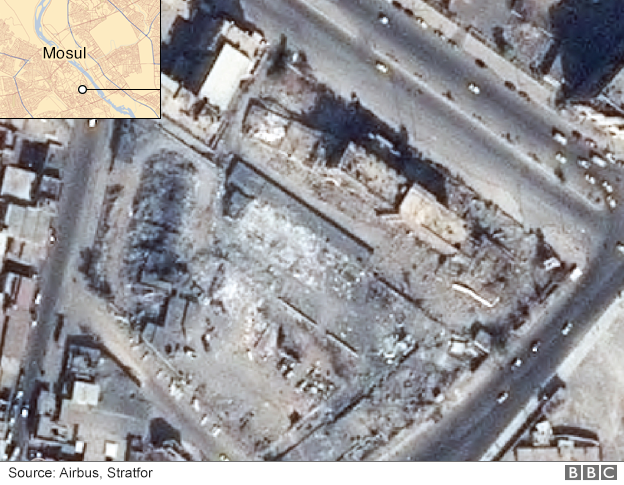
Apart from historical and religious sites, the satellite imagery also shows IS has recently damaged several of the city's government buildings in a bid to prevent their use by approaching Iraqi forces, Stratfor says.
However, the jihadists once relied on many of these administrative offices themselves.
The Nineveh province administration building had served as IS's municipal headquarters after it occupied the city. Now the structure has been almost completely flattened by explosives.
Jisr al-Hurriyah Bridge
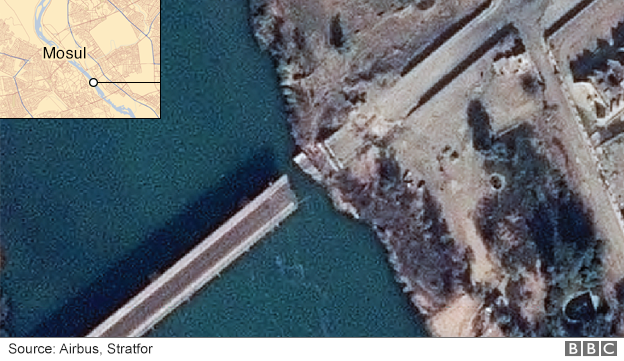
Coalition airstrikes - ahead of the battle to retake the city - knocked out a bridge over the Tigris River in an attempt to hamper the jihadists' mobility, Stratfor says.
Though most of the city's other bridges are still intact, IS fighters have allegedly rigged bridges with explosives to collapse the crossings as Iraqi forces draw closer, the analysis adds.
Extensive reconstruction of Mosul's basic infrastructure will be needed before life can return to normal, Stratfor says.
Satellite imagery released earlier this month, showed how IS had constructed multiple barricades across key routes into the northern Iraqi city and destroyed much of Mosul airport.
- Published10 November 2016
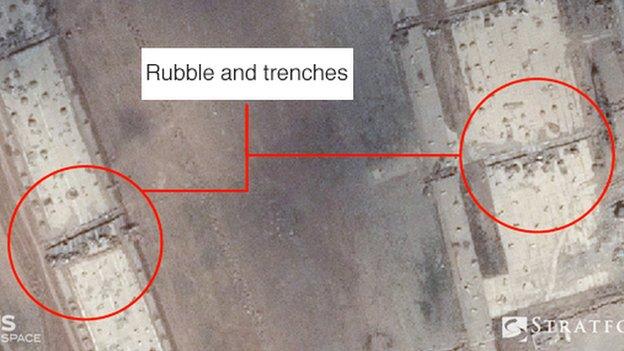
- Published4 November 2016
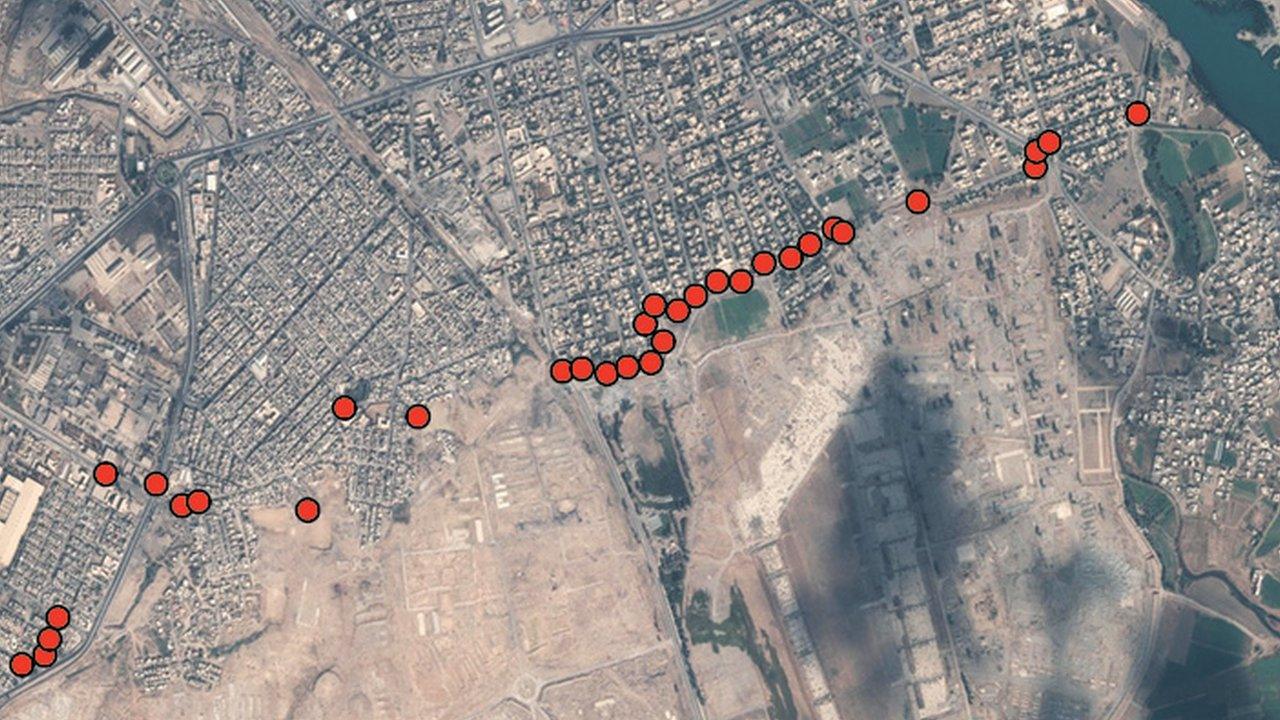
- Published10 July 2017
